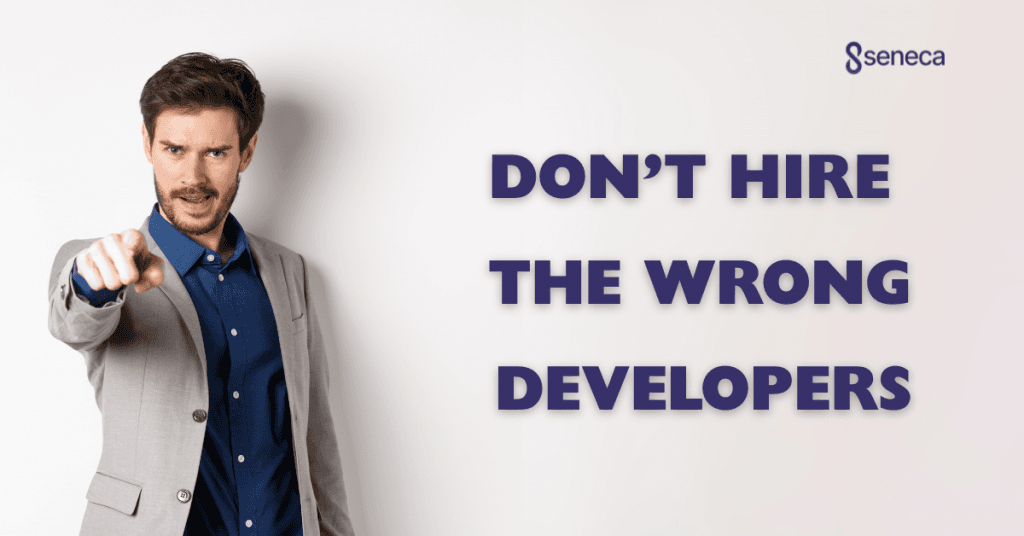Understanding Total Experience: Overview Guide
Explore our comprehensive guide on Total Experience: Learn how to integrate customer interactions seamlessly for enhanced satisfaction.
In the rapidly evolving world of technology, creating seamless and integrated experiences is becoming increasingly essential. As businesses strive to stay competitive, the concept of Total Experience (TX) is gaining significant traction. TX combines various facets of experience management like CX, EX, UX and MX into a holistic strategy. In this article, we’ll explore what is TX, how organizations can effectively implement TX. Moreover, we’ll discover reasons why TX is becoming more important in design landscape.
What is Total Experience?
Total Experience (TX) is an emerging holistic approach that integrates various experience strategies to create a cohesive and interconnected environment for all stakeholders. Unlike traditional methods that focus on a single aspect, TX includes all interactions that a business has with its customers, employees and partners. By integrating these diverse experiences, TX ensures that every touchpoint is optimized for maximum engagement and satisfaction.
Why is TX Becoming Important in the Design Landscape?
Total Experience (TX) is gaining prominence in the design landscape due to its holistic approach to integrating various experience strategies. There are several reasons why TX is becoming increasingly important:
Holistic Engagement
Firstly, TX’s integrated approach ensures that all interactions are consistently positive and interconnected. By addressing the needs of customers, employees and partners simultaneously, businesses can create more engaging and satisfying experiences. For instance, when employees are provided with better tools and a supportive environment (EX), they are more likely to deliver exceptional customer service (CX). This interconnectedness leads to higher overall satisfaction and loyalty among stakeholders.
Enhanced Communication
Effective communication is the foundation of TX. Traditional strategies often suffer from communication gaps, both internally and externally. Employees may not be fully aware of customer needs and customers might not have clear channels to provide feedback or seek assistance. TX addresses these gaps by implementing solid communication channels that facilitate seamless interaction across all touchpoints.
Internally, this means using tools and platforms that enable employees to collaborate and share information easily. Externally, it involves providing customers with multiple, integrated channels to interact with the business, such as chatbots, social media and customer service hotlines. Enhanced communication ensures that all stakeholders are informed and engaged, leading to better decision-making and higher satisfaction.
Adaptability and Innovation
The digital landscape is constantly evolving and businesses need to be agile to keep up with changing market conditions and customer expectations. Traditional experience strategies can be rigid and slow to adapt, focusing only on optimizing specific areas without considering broader trends.
On the other hand, TX encourages continuous improvement and innovation by integrating multiple experience strategies. This fosters a culture of adaptability where businesses can quickly respond to changes. For example, if a new technology emerges that can enhance both UX and CX, a company with a TX approach can implement it swiftly, benefiting from synergies across different areas. This adaptability is crucial in today’s fast-paced digital landscape.
Increased Customer Loyalty and Retention
A comprehensive TX strategy helps businesses deliver consistent and positive experiences, which are key drivers of customer loyalty and retention. According to studies, nearly a third of consumers will stop using a brand they love after only one poor experience.
By ensuring that every interaction whether it’s through customer service, product usage or employee engagement is of high quality, businesses can foster stronger relationships with their customers. Loyal customers are not only more likely to make repeat purchases but also act as brand advocates, further enhancing the business’s reputation and reach.
Competitive Advantage
In today’s competitive market, businesses need to differentiate themselves not just through their products but also through the experiences they provide. TX offers a strategic advantage by creating a unified experience that is difficult for competitors to replicate. By excelling in multiple dimensions of experience, businesses can stand out and build a strong, loyal customer base. This comprehensive approach to experience management positions companies to lead in their industries and sets new standards for excellence and innovation.
Positive Impact on Brand Perception
How a business engages with its employees and customers significantly impacts its brand perception. Brands that invest in creating a positive employee experience often see a ripple effect that extends to customer interactions. When employees feel valued and engaged, they are more likely to deliver exceptional service, which enhances the overall customer experience. This positive cycle strengthens the brand’s reputation, making it more attractive to potential customers and top talent alike. Moreover, in an era where consumers are increasingly scrutinizing companies for their ethical practices, a strong TX strategy that prioritizes the well-being of all stakeholders can significantly boost a company’s image.
How Can Companies Effectively Implement TX?
In order to implement total experience effectively, organizations should have a strategic approach that encompasses advanced technology, a focus on employee experience, enhanced multi-channel communication and the creation of a strong corporate culture.
Invest in Technology
Firstly, investing in advanced technologies is crucial for creating seamless and integrated experiences. Utilizing AI, machine learning and low-code platforms can significantly enhance interaction quality and streamline processes across all touchpoints. For example, AI and machine learning technologies can personalize customer interactions, predict customer needs, and provide real-time support through chatbots.
AI can also analyze large datasets to uncover insights that improve both customer and employee experiences. Additionally, low-code platforms enable rapid development and deployment of applications tailored to enhance user and employee experiences. By allowing non-technical staff to create and modify apps, low-code platforms facilitate quicker responses to evolving business needs and customer expectations.
Focus on Employee Experience
Secondly, enhancing the employee experience (EX) is fundamental to the success of TX. Satisfied and motivated employees are more likely to deliver exceptional service, thus leads to better customer experiences. Providing employees with intuitive and efficient tools that streamline their tasks not only boosts productivity but also reduces frustration and enhances job satisfaction.
Offering continuous learning and development programs helps employees advance their careers, which can include training sessions, workshops and access to online courses. Moreover, building a positive work culture that values and recognizes employee contributions is essential. Encouraging open communication, providing regular feedback and implementing employee wellness programs can significantly enhance the overall employee experience.
Enhance Multi-Channel Communication
Moreover, effective multi-channel communication is a cornerstone of TX. Ensuring seamless interaction across various channels helps maintain consistency and clarity in all stakeholder interactions. Utilizing platforms that enable employees to collaborate and share information effortlessly, regardless of their location is vital. Tools like Slack, Microsoft Teams and project management software can facilitate real-time communication and collaboration.
Providing customers with multiple, integrated channels to interact with the busines, such as chatbots, social media, customer service hotlines and mobile apps, ensures that these channels are synchronized to offer a consistent experience across all touchpoints. Implementing robust systems for collecting and analyzing feedback from customers and employees allows businesses to make informed decisions and continuously improve the experience for all stakeholders.
Brand the Employee Experience
Additionally, creating a strong corporate culture and an employee-first attitude can enhance both internal and external perceptions of the brand. Developing programs that recognize and reward employees for their contributions such as bonuses, awards, public recognition and other incentives, shows appreciation for their efforts.
Creating an inclusive and diverse work environment where all employees feel valued and respected can be achieved through diversity training, inclusive policies and promoting a culture of respect and equality. Encouraging employees to become brand advocates by sharing their positive experiences on social media and other platforms not only boosts employee morale but also enhances the brand’s reputation.
Conclusion
Total Experience (TX) is poised to dominate the design landscape due to its holistic and integrated approach to experience management. By unifying CX, EX, UX, and MX, TX creates a more engaging and satisfying environment for all stakeholders. This comprehensive strategy not only enhances satisfaction and loyalty but also drives innovation and efficiency, making it a crucial component of modern business success.
8seneca specializes in tailoring B2B services, with a strong emphasis on IT outsourcing solutions. Should you need support in this area, feel free to get in touch. Additionally, we’re on the lookout for eager interns to join our team. Explore our recruitment center for potential openings.
Related Articles

Jul 22, 2025
Read more
The Cost of Hiring the Wrong Developer (and How to Avoid It)
A bad developer hire can cost you time, money, and trust. Here's how to spot red flags early—and avoid hiring the wrong developer.

Jul 16, 2025
Read more
How to Hire Remote Developers: Your Ultimate Guide
Hire remote developers with ease. Find where to locate top remote developers and vet them right in this guide.

Jul 14, 2025
Read more
CASE STUDY: Making Digital Screens Work Together Perfectly
8Seneca fixed Android display synchronization for a retail client with a simple, effective solution. Download the full case study.

Jul 08, 2025
Read more
Python for Business: How It Saves You Money and Time
Save money & time with Python development for your business. Learn how efficient Python software helps companies grow faster.

Jun 30, 2025
Read more
Digital Transformation for Business: What You Need to Know
Mastering digital transformation for your business. Get clear steps for tech adoption, growth, and a secure future.

Jun 25, 2025
Read more
The Ultimate Guide to Hiring Remote Developers for Your Tech Team.
Learn to hire remote developers successfully. Discover benefits, overcome challenges, and find top global tech talent with 8Seneca's guide.
